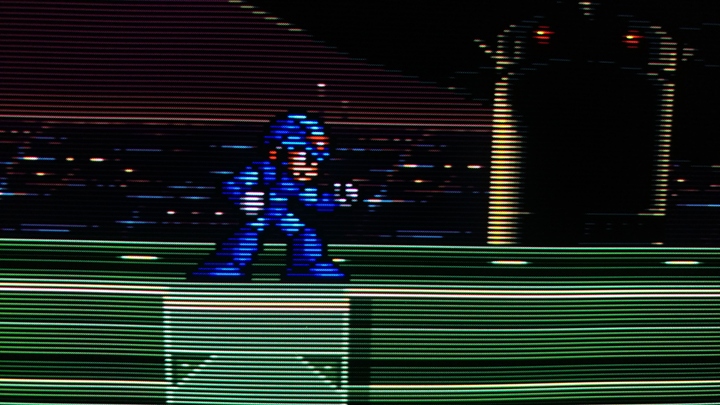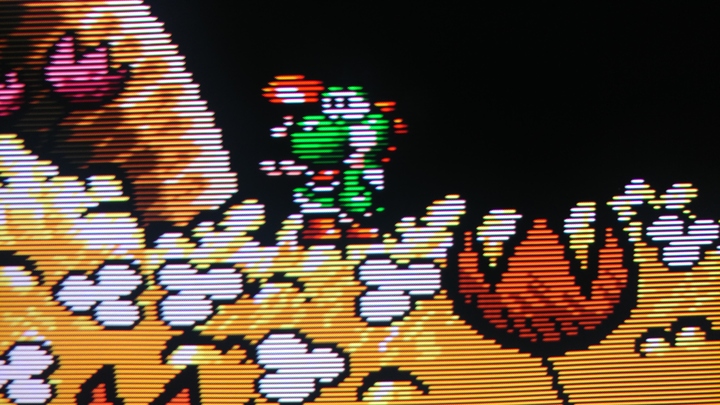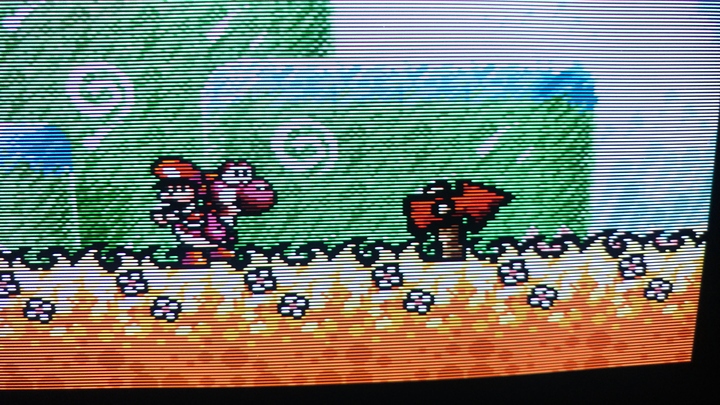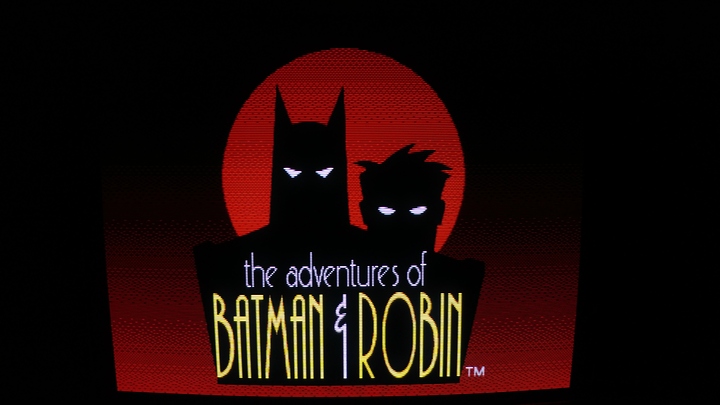Hi L1T forums, I’m trying to set up a retro console with a HTPC and a CRT TV. I’ve got this VGA to RCA converter and as I don’t have the PC yet I tried to test it out with a Windows 10 laptop that has VGA out. After connecting everything and switching the TV to the right input all I get is a blue screen (not a BSOD, just bright blue with no text or movement). The audio does work, and the laptop does recognize the TV as a second display. The TV itself works perfectly. I also tried flicking the little switch on the converter box between NTSC and PAL but nothing happens. So what am I doing wrong? Do I need some different kind of converter?
Are you using an old VGA cable? I had 2 old ones that were really flaky and one in particular you had to play with to see a desktop, otherwise it would end up in a similar state as you describe. I replaced the cables and all has been well so far.
You may also want to check the laptop connector. I don’t know of too many recent laptops with VGA connectors, so if it has seen some miles it may have picked up debris or been damaged. If you can test the laptop and cable with a monitor that would help troubleshoot the issue.
If you’re using your own vga cable make sure all the pins are there and its not some specific setup.
I bet the box isn’t generating a video signal at all. Switching it to PAL mode should have made the TV lose sync. Most TVs have a blue screen for composite/video in when there is no signal—is the screen any different if you yank the yellow cable? The audio is probably a passive adapter, no need to amplify a line-level signal. You plugged in the usb cable right?
FYI, that box is an interesting choice for a retro setup. It seems to accept a minimum resolution of 640x480, so it definitely scales everything and probably only outputs interlaced. It should give you a picture for sure, but you might not be happy with the results.
Sorry for replying 8 months late but this is a side project of mine and I haven’t had much time to work on it. The TV did not display a blue screen when the cable was removed, it had a different no input screen. Also why might I not be happy with the results? The converter was the cheapest one I could find, I must say I don’t otherwise really know what I’m doing.
Hmm. Even if the red and green pins are broken on your VGA cable/port, you should get a black-blue image. Maybe the box doesn’t like the resolution you’re sending to it? It should work for sure with 640x480. The box probably isn’t dead, since it seems to be generating the blue screen, but I’m not sure why it isn’t happy.
If you get the box working, the video quality might be disappointing for a couple reasons. First, it outputs composite video (the yellow cable), which crams all the video information onto a single conductor. It distorts colors and causes weird artifacting, especially around sharp color transitions (a black/white checkerboard will look like a crazy rainbow grid or something). S-video uses two conductors and looks way better, but it’s uncommon on consumer TVs. RGB or component video (YPbPr) are best; VGA carries RGB, which can be converted losslessly to component, which some late-90s TVs have.
Second, most retro games run at 240p—240 horizontal lines of resolution, like 1080p but 4.5 times smaller. However, consumer television uses 480i instead. The “i” is for interlaced, as opposed to progressive; it means that the TV draws the odd-numbered lines, then the even ones on the next frame (technically the next field), and keeps alternating. It’s a weird trick for faking a higher resolution, and only really makes sense for analog broadcast TV and CRTs.
The issue here is that your box isn’t really designed for retro games, so it’ll probably output 480i whether you want it or not. So instead of scanlines, games will have a flickering/vibrating appearance instead. Still playable, but personally I’d just use an LCD monitor with a cool shader at that point.
If you want to really get into this stuff, My Life in Gaming has an excellent series on retro console video output stuff (The RGB Masterclass). I think the scaler of choice these days is the OSSC (open source scanline converter) but it’s obnoxiously expensive. Other hardware is kind of hit-or-miss.
Honestly, the cheapest way to get retro games on a CRT is to buy a monitor (VGA-input computer monitor, not a TV) off ebay/goodwill/etc. You can use RetroArch shaders to get scanlines and RGB-quality output without any extra hardware.
Thank you for the reply.
Maybe the internal resolution of the laptop has to be that? Sadly the lowest resolution Windows allows is 800x600 and I think I tried that. Might it have been a refresh rate issue? I was outputting a 60Hz signal and the TV is 100Hz.
This TV does have S-Video. I’ll look into a VGA to S-Video adapter.
Most games I am planning on having are SNES games for which I would use bsnes, an emulator which supports software de-interlacing. I’m not sure if that would help, but interlacing artifacts are not a huge concern for me anyway.
I’ll definitely have a look, thanks for the recommendation!
I don’t see how buying an extra monitor would be cheaper than using a CRT I have already. If the TV ends up not working at all I’ll do that as a last resort. I wouldn’t add shaders to a monitor though. Also, RetroArch is not suitable for this project so I actually wrote my own front-end from scratch.
Weird, maybe there’s something wrong with the EDID? 640x480 is pretty much the fallback resolution for monitors etc. Definitely take another look. Are you mirroring your displays, or just configuring the box?
From the seller’s website:
So 800x600 should work, although you’ll probably still get weird scaling artifacts unless you get 640x480 working. I would try some of these, and make sure the refresh rates are right. Also, have you tried on another TV?
This is a new one on me, consumer CRTs traditionally run at a fixed 60 Hz (50 in PAL regions). I did a quick google search and it seems like this was a trend towards the end of the CRT era; probably reduces flicker, but it’ll add some “judder” since the input and output aren’t synced. It also probably does some post-processing since it has a framebuffer anyway, which is a dealbreaker for a lot of us retro assholes, but as always that’s up to you.
On the other hand, some people like the low-fi composite look. All personal preference, though it’s hard to go back from RGB 
If the scaler outputs an interlaced signal, it’s going to be flickery no matter what. I think bsnes’ deinterlacing is for handling SNES games that actually use interlaced modes (usually for menus and stuff). Since LCDs are progressive, bsnes can put a bob/weave/etc filter on 480i content instead of just shaking the frame up and down or something. Either way, best to get something running before stressing over stuff like that.
You can find them for free sometimes 
The real selling point is full-on PVM quality without an $100+ scaler. The OSSC is expensive! But of course, it depends on your goals for the setup. One downside is that monitors aren’t usually that large.
That’s crazy! No clue how you got that working, but props. However, RetroArch is actually really adaptable in weird video-out situations like this. There are a few shaders designed for consumer TV output, and there’s a new feature called CRTSwitchRes that sets the exact video mode that the game uses, like GroovyMAME. I’ve had mixed results on my VGA monitor but I still want to try it with a consumer TV sometime.
Here’s a few pictures of my setup, just to give you an idea of where I’m coming from. I’ve since upgraded to a Sony Trinitron  but I don’t have pics of it on-hand. This is all with RetroArch, the
but I don’t have pics of it on-hand. This is all with RetroArch, the tvout+interlacing shader, and a CRT I picked from a friend’s basement for free.
Anyway, good luck getting that box sorted! Retro setups can be a serious headache, but once it all works, it’s all worth it 
@MrFigs is spot on with the advice.
Sounds to me like the VGA to RCA convertor is defective. The problem I see with the proposed setup is that it will convert a 480p RGB signal to a 480i composite signal, then the 100Hz TV may try and do some crude post-processing to add extra frames to smooth things out (hopefully you’ll be able to switch this off and run at native 50Hz PAL or 60Hz NTSC). Whilst some people (with no taste  ) like this for their movies I always hated it, and for gaming lag starts to creep in (let’s not even talk about the awfulness of composite vs proper RGB).
) like this for their movies I always hated it, and for gaming lag starts to creep in (let’s not even talk about the awfulness of composite vs proper RGB).
If your retro system is outputting a VGA RGB signal then as @MrFigs says a CRT VGA monitor would get you the best result, although the monitors internal scaling might not be the best for any 240p output it will still be much, much better than the 480p - 480i composite then TV post-processing.
I picked up a DELL 16" VGA CRT off ebay for 99p I just had to be patient for one to come up. I had to go and collect it but for retro gaming it’s so worth it. The only draw back is that most old 1980/90’s consoles output at 15kHz not the VGA 31kHz but this isn’t a problem for you as you are not using original hardware.
One more tidbit about VGA monitors: they aren’t able to output 240p or 480i video, like a TV can. However, they can do 480p no problem (i.e. 640x480). So, the strategy is to use a RA shader to add a black line between each 240p scanline to get 480p without linedoubling. You could also probably use the OSSC to do the same thing with original hardware.
The other strategy is to run the monitor at 120 Hz, and double each 60 Hz frame. But you can’t display interlaced video this way, and it requires a monitor that can actually refresh that fast.
CRT monitors rarely have scalers build in; if the resolution is too high or too low, they’ll just say “out of range” or something and turn off after a while. Which is nice actually, since you don’t have to diagnose weird scaling bugs.
Decent template to get started with here:
You should be able to do 640x480 in windows, you might need to go into safe mode with limited video or whatever it was called
There are also options in the properties for applications to run in compatibility 640x480 mode



